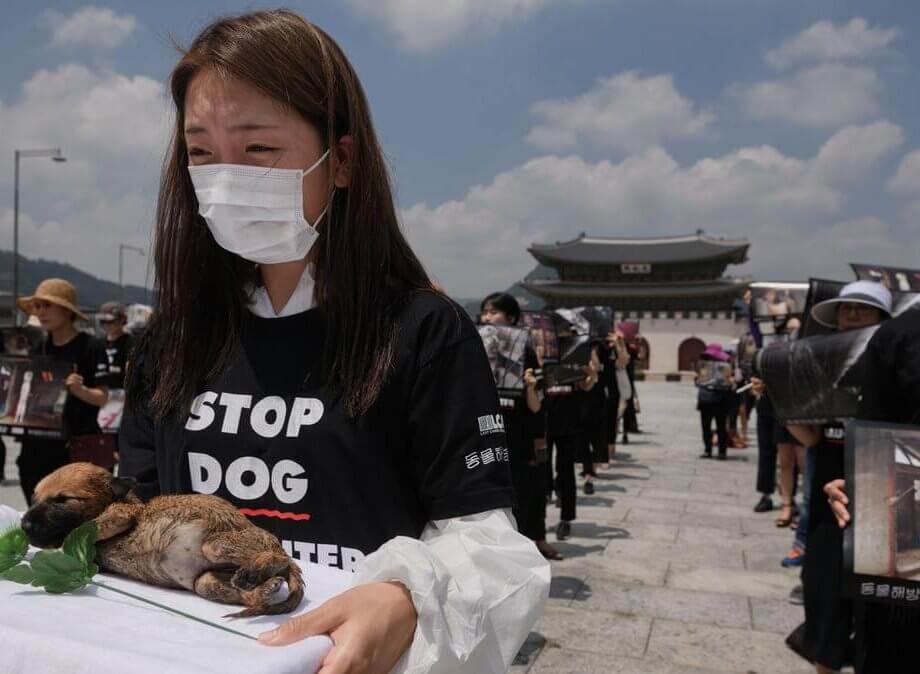South Korea’s Historic Dog Meat Ban: A Turning Point for Animal Welfare
In January 2024, South Korea’s National Assembly unanimously passed a landmark law banning the breeding, slaughter, sale, and distribution of dogs for human consumption. The ban, set to take full effect in February 2027 after a three-year grace period, marks a dramatic shift in the nation’s relationship with dogs and reflects evolving societal values. While widely celebrated by animal welfare advocates, the ban has also triggered a complex set of challenges—most notably, the uncertain fate of the estimated half a million dogs currently bred for meat and the livelihoods of those who depend on the industry.
- South Korea’s Historic Dog Meat Ban: A Turning Point for Animal Welfare
- Why Did South Korea Ban Dog Meat?
- The Scale of the Challenge: What Happens to the Dogs?
- Farmers in Limbo: Economic and Social Fallout
- Enforcement and the Risk of Illegal Trade
- Cultural Shifts and International Implications
- Rescue Efforts and the Role of International Adoption
- Looking Ahead: Will the Ban Succeed?
- In Summary
As the world watches South Korea’s transition away from a centuries-old practice, questions remain about how the country will manage the welfare of these animals, support affected farmers, and enforce the new law. This article explores the origins of the ban, the logistical and ethical dilemmas it has created, and the broader implications for Korean society and animal welfare worldwide.
Why Did South Korea Ban Dog Meat?
Dog meat consumption in South Korea has long been a source of domestic debate and international controversy. Historically, dog meat was never a staple of the Korean diet, but it gained popularity in the 20th century, particularly during the summer months when dishes like Bosintang (dog meat soup) were believed to boost stamina. However, as South Korea modernized and pet ownership soared—about a quarter of households now have dogs—public attitudes shifted dramatically.
By the 2020s, surveys showed that the vast majority of South Koreans had never eaten dog meat, and only a small minority continued the practice. A 2024 government poll found that just 8% of respondents had consumed dog meat in the previous year, down from 27% in 2015. The decline was especially pronounced among younger generations, who increasingly view dogs as family members rather than livestock.
Animal welfare campaigns, both domestic and international, played a significant role in changing perceptions. Graphic footage of dog farms and slaughterhouses circulated widely on social media, sparking outrage and calls for reform. The government responded with incremental measures, such as banning public slaughter and closing major dog meat markets, before finally enacting a comprehensive ban in 2024.
The Scale of the Challenge: What Happens to the Dogs?
While the ban is a victory for animal rights, it has created an unprecedented logistical challenge: what to do with the estimated 500,000 dogs currently being raised for meat on more than 1,500 farms across the country. The government has pledged to rehome as many dogs as possible, offering financial incentives of up to 600,000 won (about $450) per dog surrendered and allocating approximately 100 billion won ($75 million) to support the transition.
Park Beom-su, South Korea’s vice agriculture minister, emphasized the government’s commitment to animal welfare:
“Although many are concerned the remaining dogs might be euthanized or a lot of them could be processed for consumption over the next three years, I can certainly say, that is not our plan.”
However, animal welfare organizations and industry representatives alike have voiced concerns about the feasibility of rehoming such a large number of animals. South Korea’s animal shelters are already overcrowded, and there is a social stigma attached to adopting dogs from meat farms, particularly larger breeds like the Tosa Inu, which are classified as “dangerous” and require special permits.
Lee Sangkyung, campaign manager at Humane World for Animals Korea, highlights the dilemma:
“There is no way animal shelters can take in that huge number of dogs.”
As a result, many dogs face an uncertain future, with the risk of euthanasia looming if homes cannot be found. Some rescue organizations have begun sending dogs overseas to countries like the United States, Canada, and the United Kingdom, where adoption rates are higher and the stigma is less pronounced. In one recent operation, 50 dogs rescued from a South Korean farm arrived in the U.S. to begin new lives, a testament to the international dimension of the rescue effort.
Farmers in Limbo: Economic and Social Fallout
The ban has also upended the lives of thousands of people who depended on the dog meat industry for their livelihoods. Many farmers, butchers, and restaurant owners feel abandoned by the government, arguing that the compensation offered is insufficient and that the transition period is too short to find alternative sources of income.
Reverend Joo Yeong-bong, president of the Korean Association of Edible Dogs, describes the situation:
“People are suffering. We’re drowning in debt, can’t pay it off, and some can’t even… find new work. It’s a hopeless situation.”
Some farmers have threatened to resist the ban, demanding higher compensation—up to 2 million won ($1,500) per dog—and a longer grace period. Others fear that the trade could go underground, making enforcement more difficult and potentially leading to worse conditions for the animals.
The government has responded by offering not only direct payments for surrendered dogs but also low-interest loans and retraining programs for those willing to transition to other agricultural businesses. But the process is fraught with uncertainty, and many in the industry remain skeptical that the support will be enough.
Enforcement and the Risk of Illegal Trade
Enforcing the ban presents its own set of challenges. While the law imposes stiff penalties—up to three years in prison or fines of up to 30 million won ($22,000) for violators—there are concerns that some farmers may attempt to breed more dogs in the short term to maximize compensation, or that illegal slaughterhouses may continue to operate in secret.
Local governments are tasked with monitoring farms, dismantling facilities, and ensuring compliance, but the close ties between local officials and business owners could complicate enforcement. Animal welfare groups have called for strict oversight and transparency to prevent abuses and ensure that the transition is humane for both animals and people.
There is also the question of what happens to the dogs if the system becomes overwhelmed. Cho Hee-kyung, head of the Korean Animal Welfare Association, acknowledged the grim reality:
“If remaining dogs become ‘lost and abandoned animals’ then it’s heartbreaking but they will be euthanized.”
The government insists that euthanasia is not part of its plan, but without sufficient resources and public willingness to adopt, the risk remains.
Cultural Shifts and International Implications
The dog meat ban is not just a legal or logistical issue—it is a reflection of deeper cultural changes in South Korea. For decades, the practice of eating dog meat was defended by some as a matter of tradition and national identity, especially in the face of foreign criticism. However, the rise of “pet culture,” generational change, and the influence of global animal welfare movements have transformed public attitudes.
First Lady Kim Keon Hee, a vocal animal lover, has been a prominent supporter of the ban, and President Yoon Suk Yeol’s administration has made animal welfare a policy priority. The move has also been welcomed by international organizations, which see it as a model for other countries where dog meat is still consumed.
Yet, the ban has its critics. Some argue that it infringes on personal dietary choices and targets a minority practice while ignoring the suffering of other farmed animals. Others worry about the potential for increased illegal trade or the displacement of demand to other meats, such as black goat, which has already seen a price hike.
Rescue Efforts and the Role of International Adoption
With the scale of the challenge so great, international rescue organizations have stepped in to help. Groups like Humane World for Animals and Humane Society International have worked with Korean authorities to close farms and transport rescued dogs abroad. Since 2015, more than 2,700 dogs have been rehomed through such efforts, with many finding new families in North America and Europe.
These rescues not only save individual animals but also help change perceptions about meat farm survivors, who often face stigma in South Korea. Daniel Henney, a Korean American actor and advocate, participated in a recent rescue and adopted a golden retriever named Juliette, using his platform to promote adoption and compassion.
However, experts caution that international adoption is not a scalable solution for the hundreds of thousands of dogs affected. The focus, they argue, must remain on building domestic capacity for rescue, rehabilitation, and adoption, as well as on preventing future overbreeding.
Looking Ahead: Will the Ban Succeed?
As the 2027 deadline approaches, the success of South Korea’s dog meat ban will depend on several factors:
- Effective enforcement of the law and prevention of illegal trade
- Sufficient financial and logistical support for farmers and businesses transitioning out of the industry
- Expansion of shelter capacity and public willingness to adopt former meat farm dogs
- Continued public education to reduce stigma and promote animal welfare
- International cooperation to support rescue and rehoming efforts
The government has established a dedicated committee, including representatives from all stakeholders, to oversee the transition and address emerging challenges. The next few years will be critical in determining whether the ban can deliver on its promise of ending the dog meat trade humanely and sustainably.
In Summary
- South Korea’s 2024 ban on dog meat, effective in 2027, marks a major shift in animal welfare policy and public attitudes.
- The fate of an estimated 500,000 dogs bred for meat remains uncertain, with rehoming and shelter capacity posing significant challenges.
- Farmers and industry workers face economic hardship and are demanding greater compensation and support for transitioning to new livelihoods.
- The government has pledged financial incentives, retraining, and strict enforcement, but concerns persist about illegal trade and the risk of euthanasia for unadopted dogs.
- International rescue efforts have helped some dogs find new homes abroad, but a sustainable, domestic solution is needed.
- The ban reflects broader cultural changes in South Korea and may influence animal welfare debates in other countries.
- The coming years will test the government’s ability to balance compassion, enforcement, and support for all those affected by the end of the dog meat trade.












